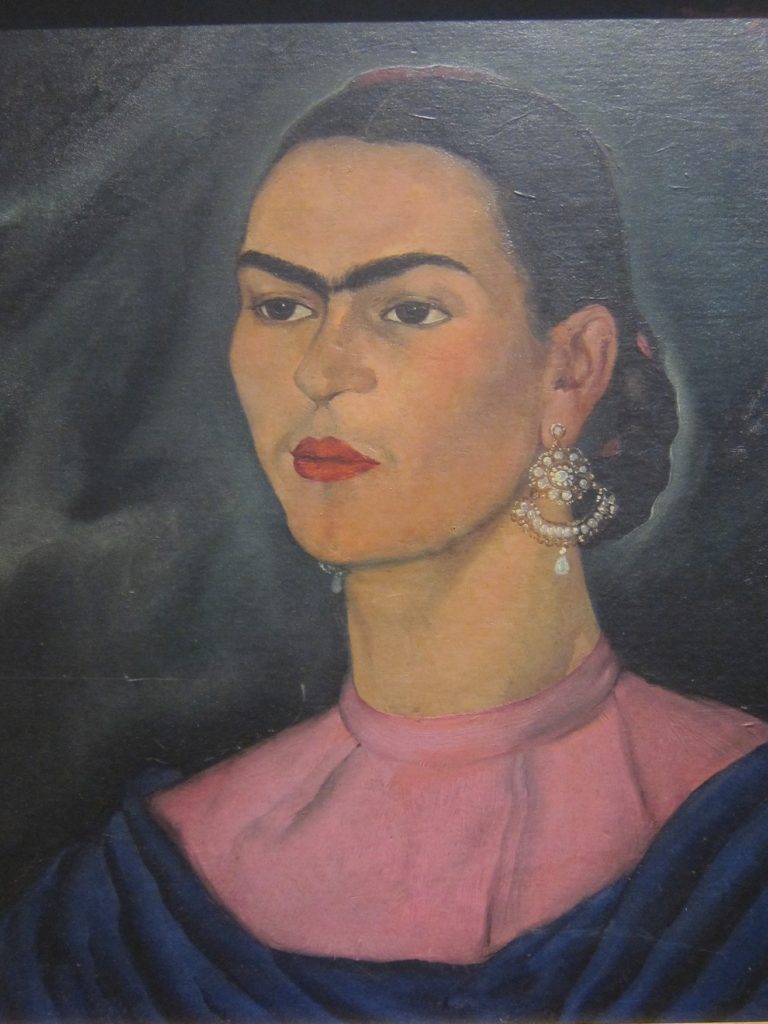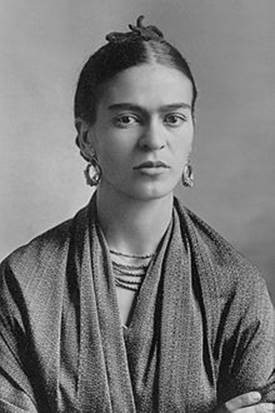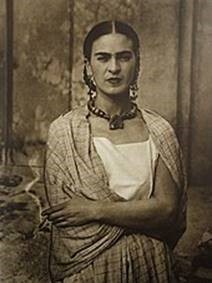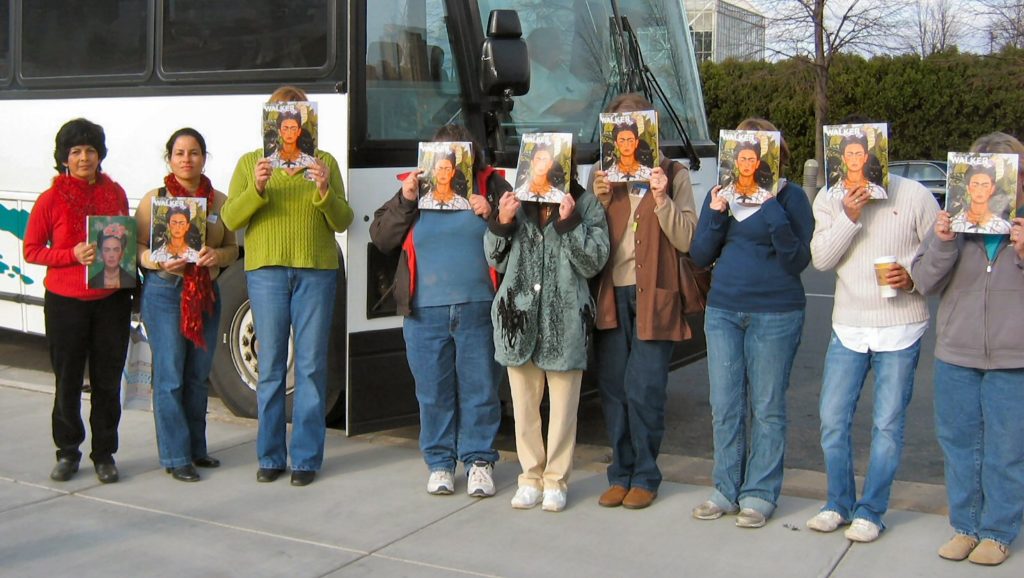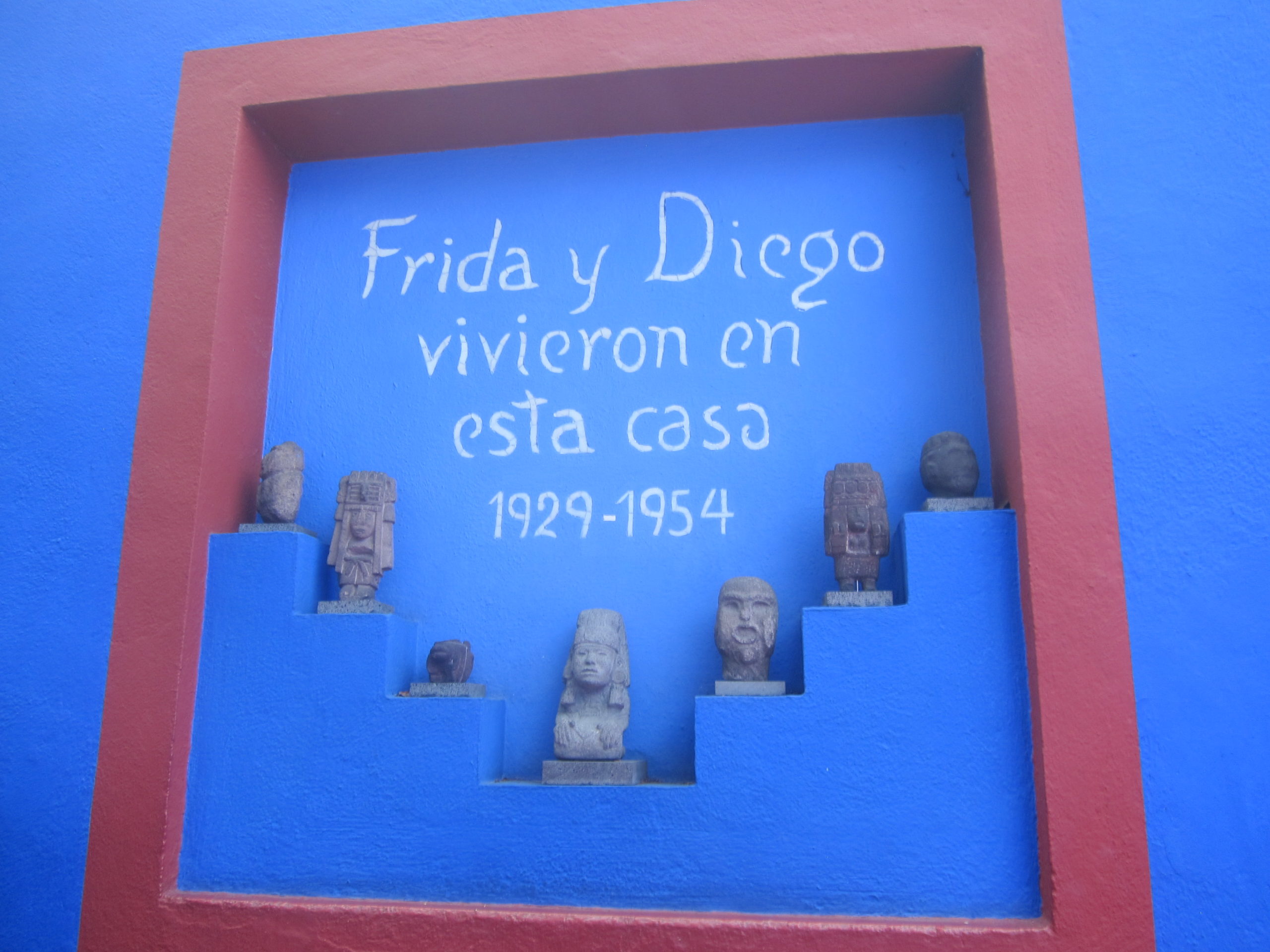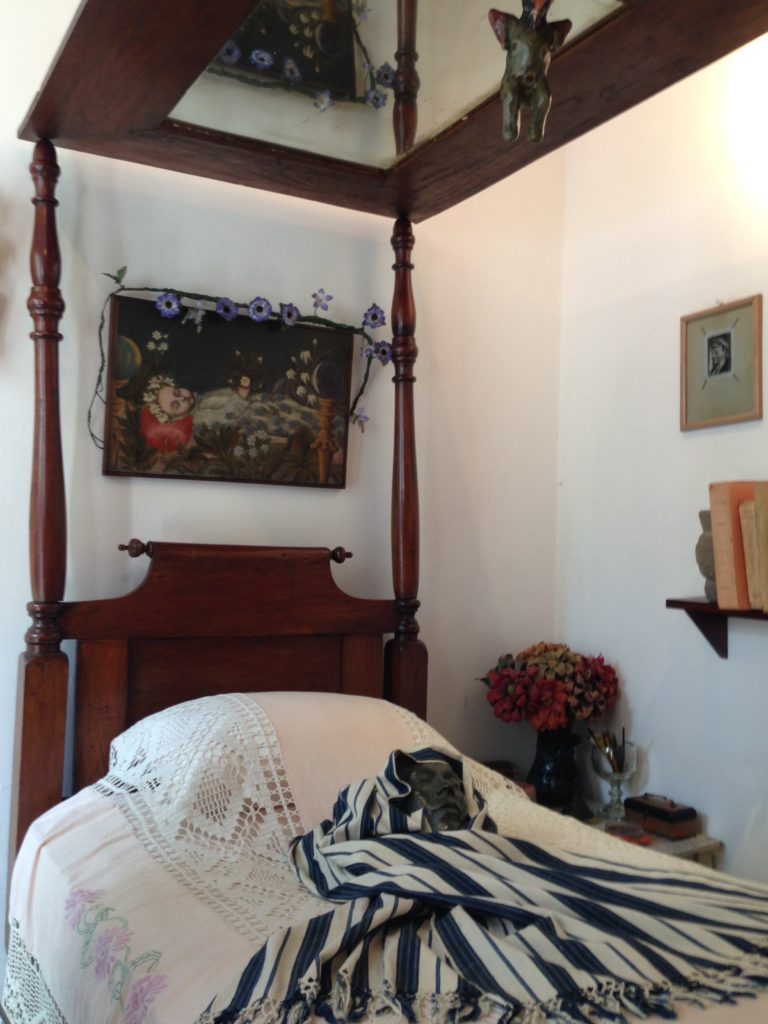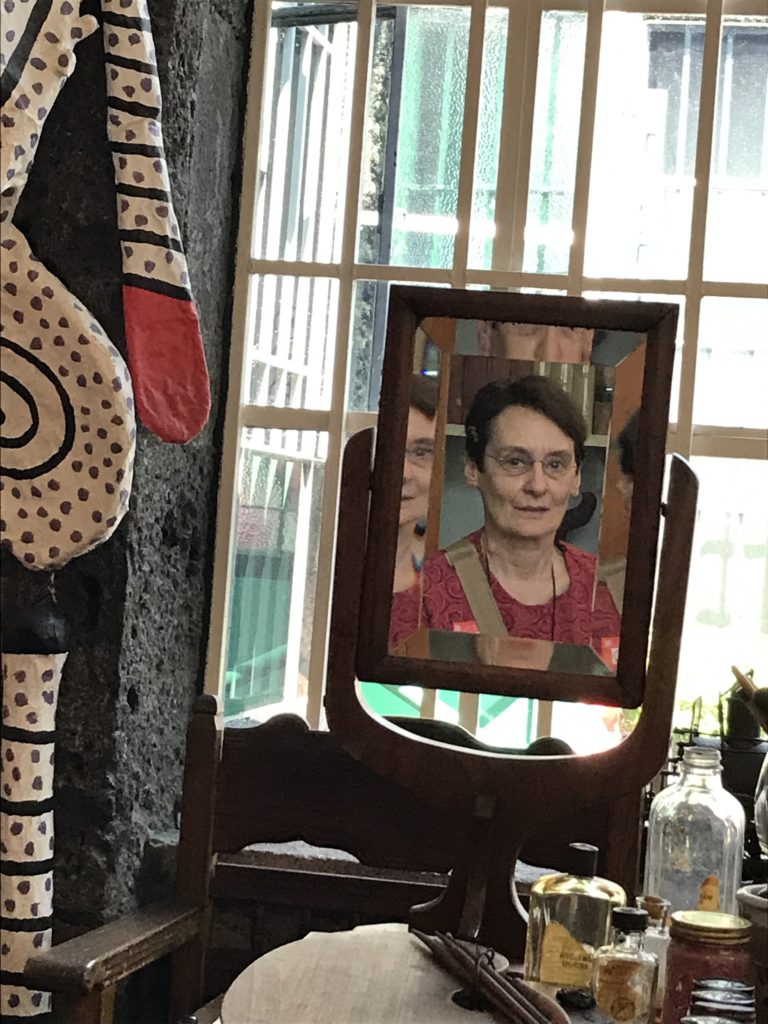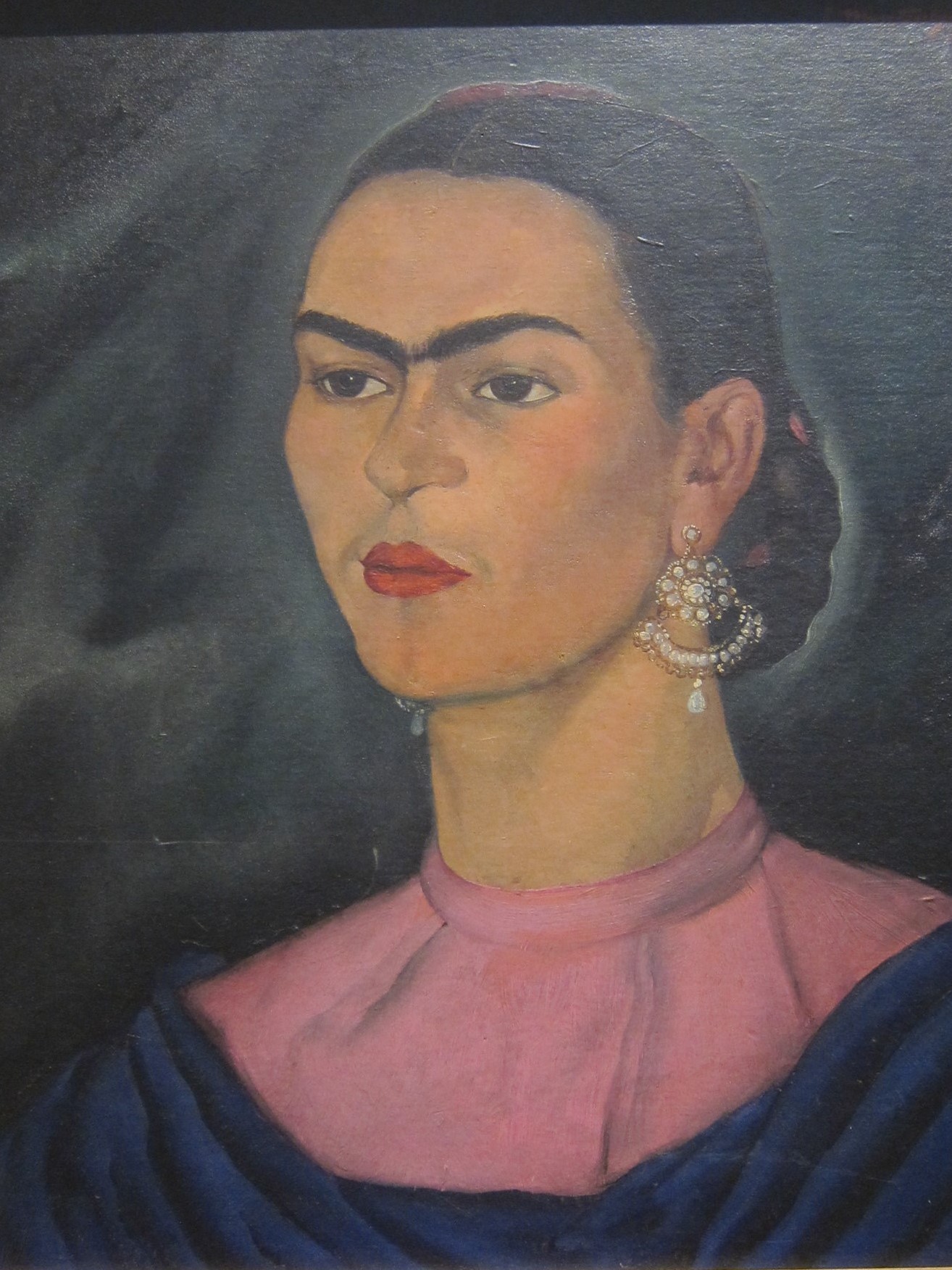
The Image Reflected in Frida’s Mirror
Meet Frida. Frida Kahlo. Once you hear her story and see her art, her name will evoke vibrant colors, scenes of intense pain, playful monkeys, deep yet heart-breaking love affairs and her iconic unibrow. At first glance, her collection of self-portraits rivals any uncontrolled selfie photographer of our time, but this woman was not a narcissist enamored with her own unique beauty. Frida painted self-portraits while bed-ridden, a mirror affixed to the overhead canopy and canvases placed in her hand by her photographer father, vigilant of his daughter’s mental and physical health.
At age six, Frida contracted polio, but it wasn’t until the trolley car accident at age eighteen that she was confined to the mirrored bed that brought forth the self-portraits. Frida’s body was literally skewered, rammed through by a metal shaft, leaving her in a coma, a full body cast and a lifetime including thirty operations. This pain saturates her paintings, most notably in the Two Fridas, the Broken Column, the Wounded Deer, Without Hope and A Few Small Nips.
But, it is the mirror that draws me in. The mirror, a universal symbol of light. Mirrors replicate images, reflect their surroundings, capture a likeness while simultaneously distorting it. Medieval castles utilized mirrors to magnify candlelight back into their dark, cavernous rooms. Mirrors held to the sun ignite fire. Mirrors allow us to contemplate ourselves, piecing together a perceived identity.
Frida searched for herself in the mirror. Broken in body, she slowly stitched herself back together, a re-creation of a new self and situation. I imagine, without comprehension, the emotional struggle to maintain hope, to envision a future, to tolerate the physical pain, to process the grief of losing mobility and independence. She painted her trauma into the face gazing back at her. Her reflected portraits stare back at me – resilient, tenacious, resolute.
Ah, Frida. So many dimensions. Pain. Joy. Your vivacious Mexican costumes, communist politics, bisexual affairs, monkeys perhaps taking the place of the beloved fetuses you were unable to carry to term. Then, your final art exhibition in Mexico City. You arrived by ambulance and were carried in on your four-poster bed! On July 2, 1954, you rallied in Mexico City’s protest against the United States overthrow of duly-elected Guatemalan President Jacobo Arbenz, just eleven days before your death. Forty-five years later, I would discover you and the fate of Jacobo Arbenz.
It was then I added Frida to my Many Faces of Mexico college course curriculum. In 2007, the Walker Arts Museum was one of three U.S. museums chosen to celebrate the 100th anniversary of Frida’s birth. I chartered a bus, filled it with students and we were off!
It wasn’t until 2019 that I made the pilgrimage to La Casa Azul., the cuna, cradle of Frida’s life and work. The Blue House, located in the cobblestoned, palm tree-lined streets of one of Mexico City’s bohemian municipalities, Coyoacán is the mecca for Frida aficionados.
And, there it was, dotted by shadows on the corner of Olmedo Street. La Casa Azul. Blue. Mexican, deep, eye-popping blue. I grasped my entrance ticket tight to my chest. The lines formed around the block in two directions. I stepped across the threshold, lightly touching the carved wooden door. Surely her hand had once swept by this wall on the way to the inner patios. Certainly she had stopped here a moment to scan the red bougainvilleas, large terracotta pots of flowering succulents, pineapple shaped palms and gurgling pools with trickling fountains. The entire space, a work of art.
We followed the paved paths around the ceramic planters, stopped to take our pictures in front of the painted words, “Frida y Diego vivieron en esta casa 1929 – 1954” – Frida and Diego lived in the house – then entered the first room and the photos of her life. Each room revealing the continued development of her art – painful, whimsical, sentimental, mournful and now historic.
Walking through the everyday living areas felt like stepping into Frida’s shoes. The tiled kitchen shouting out in yellows and blues tiles around the cooking areas. Diego’s worn overalls hanging on a peg below his straw hat as if he would be coming by at any moment to get them. The iconic four-poster bed covered with embroidered linens, crocheted pillow cases and the wooden canopy ceiling mirror, made up as if she’d be returning there that night. Every blown glass bottle, Mayan statue, ceramic vase added to the still life.
And then, we entered her multi-windowed studio. Before me, the long table spread with paint brushes, pallets with dabs of dried color pigments, and her empty wheel chair in front of an easel. To the side, a mirror, about the size to fit a face, a portrait, Frida’s face, lined up with the easel. I imagined her sitting there, paint brush poised, leaning over to take another look at her reflection. Wrapped in my fantasy, I bent down, rather expecting to see her pensive reflection staring out of this, her mirror.
I gasped! There was a face in the mirror! Staring back at me – from within Frida’s mirror – my face – fused with hers.
In an instant, all the faces that were ever reflected in her mirror merged into one. All of our mutual journeys, our trials, pain, glee, discoveries . . . united in one reflection.
Frida. Refracted. Reflected. Reunited. A mirror image.
An excellent portrayal of Frida and Diego can be found in the movie : Frida with Salma Hayek in the role of Frida Kahlo, 2002.
Preview below:

